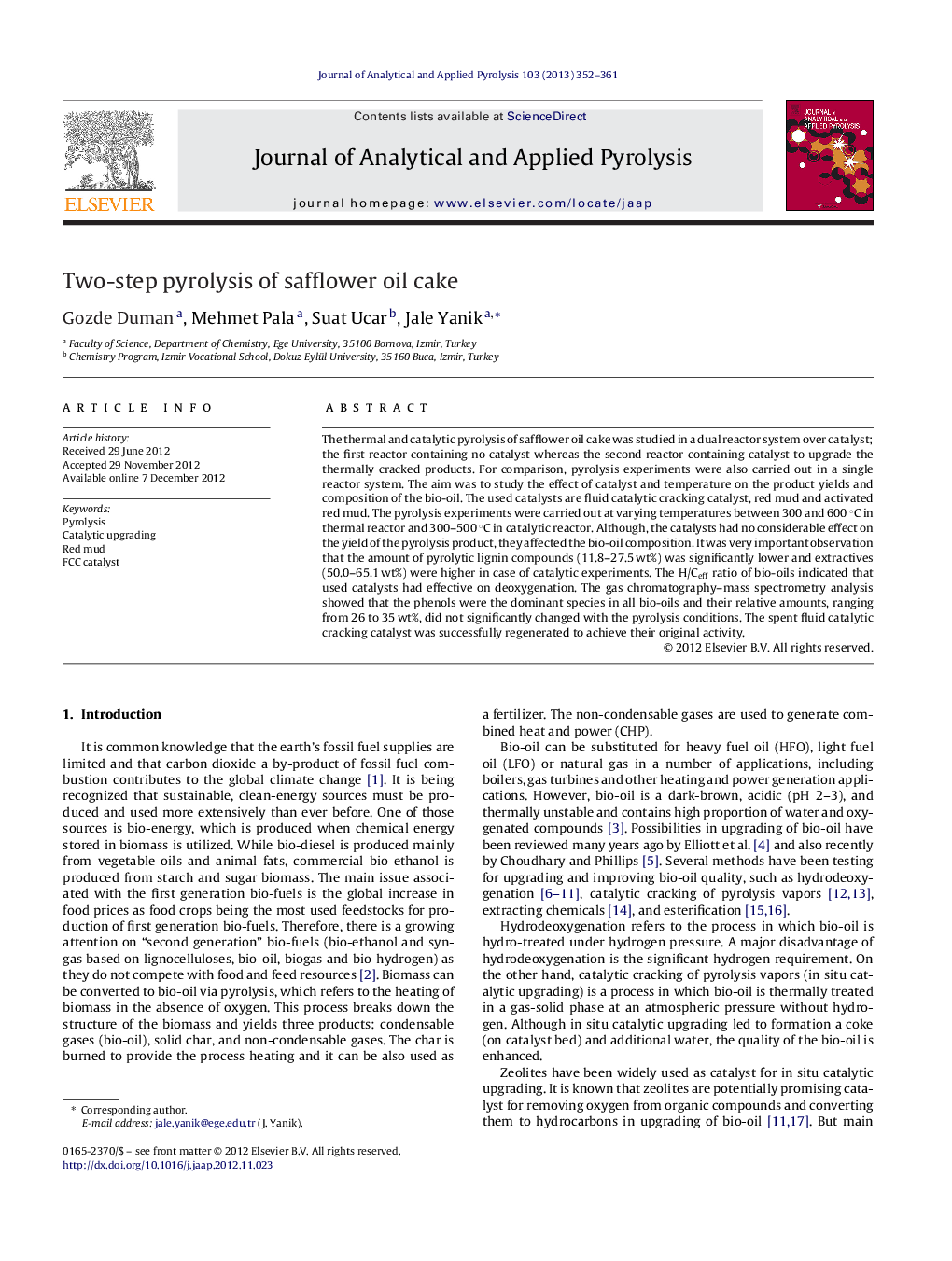| Article ID | Journal | Published Year | Pages | File Type |
|---|---|---|---|---|
| 1197206 | Journal of Analytical and Applied Pyrolysis | 2013 | 10 Pages |
The thermal and catalytic pyrolysis of safflower oil cake was studied in a dual reactor system over catalyst; the first reactor containing no catalyst whereas the second reactor containing catalyst to upgrade the thermally cracked products. For comparison, pyrolysis experiments were also carried out in a single reactor system. The aim was to study the effect of catalyst and temperature on the product yields and composition of the bio-oil. The used catalysts are fluid catalytic cracking catalyst, red mud and activated red mud. The pyrolysis experiments were carried out at varying temperatures between 300 and 600 °C in thermal reactor and 300–500 °C in catalytic reactor. Although, the catalysts had no considerable effect on the yield of the pyrolysis product, they affected the bio-oil composition. It was very important observation that the amount of pyrolytic lignin compounds (11.8–27.5 wt%) was significantly lower and extractives (50.0–65.1 wt%) were higher in case of catalytic experiments. The H/Ceff ratio of bio-oils indicated that used catalysts had effective on deoxygenation. The gas chromatography–mass spectrometry analysis showed that the phenols were the dominant species in all bio-oils and their relative amounts, ranging from 26 to 35 wt%, did not significantly changed with the pyrolysis conditions. The spent fluid catalytic cracking catalyst was successfully regenerated to achieve their original activity.
► FCC and RM catalysts have no considerable effect on the product yield in the in situ upgrading of pyrolysis vapor. ► Catalysts decrease amount of LMWL/HMWL compounds and increase extractives in bio-oil. ► The used catalysts showed deoxygenation effect and also increased the amount of aromatics, mainly benzene derivatives, in bio-oil. ► RM (an iron oxide catalyst) is not stable against acidic pyrolysis vapors, whereas FCC can be regenerated.
